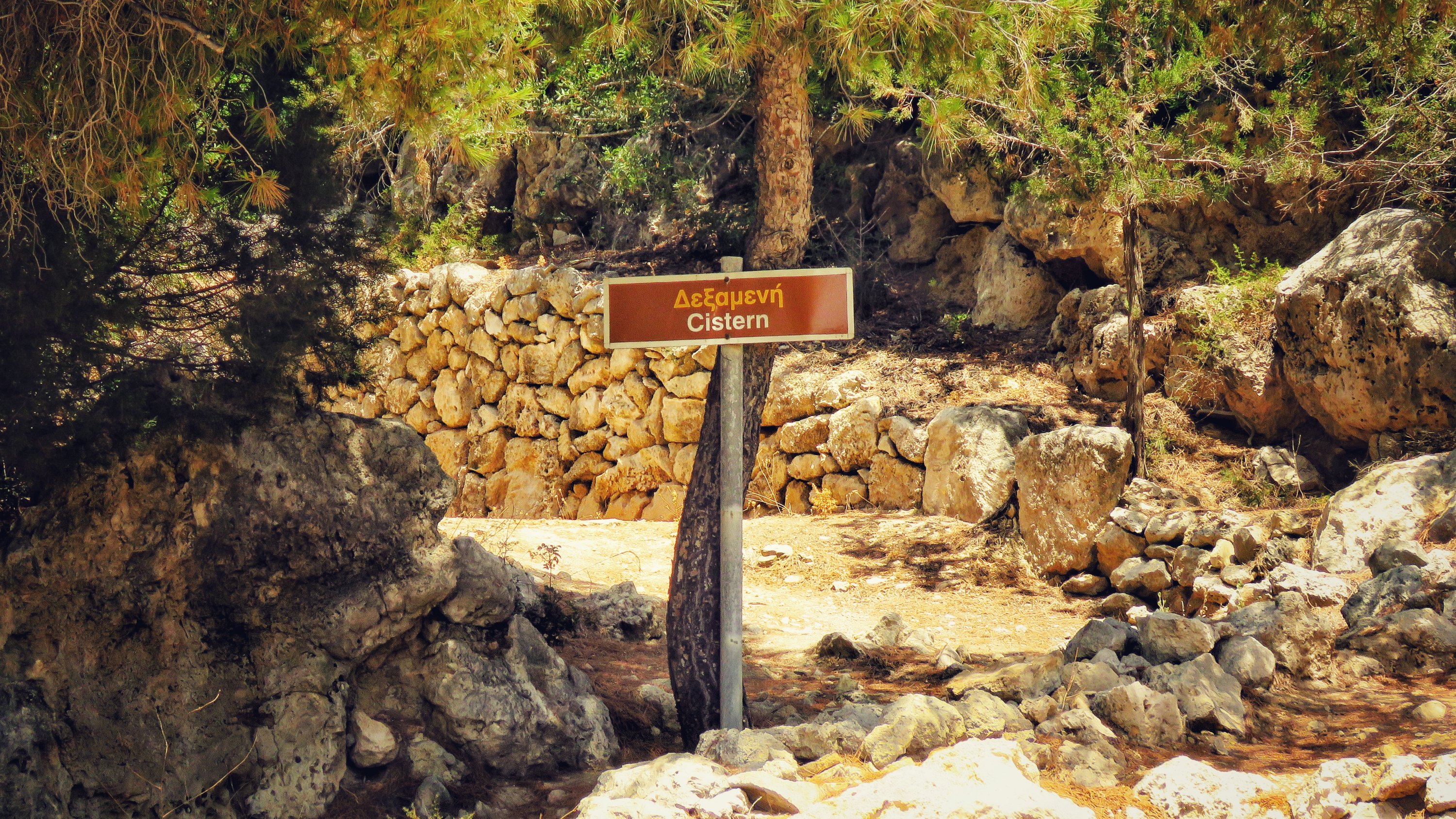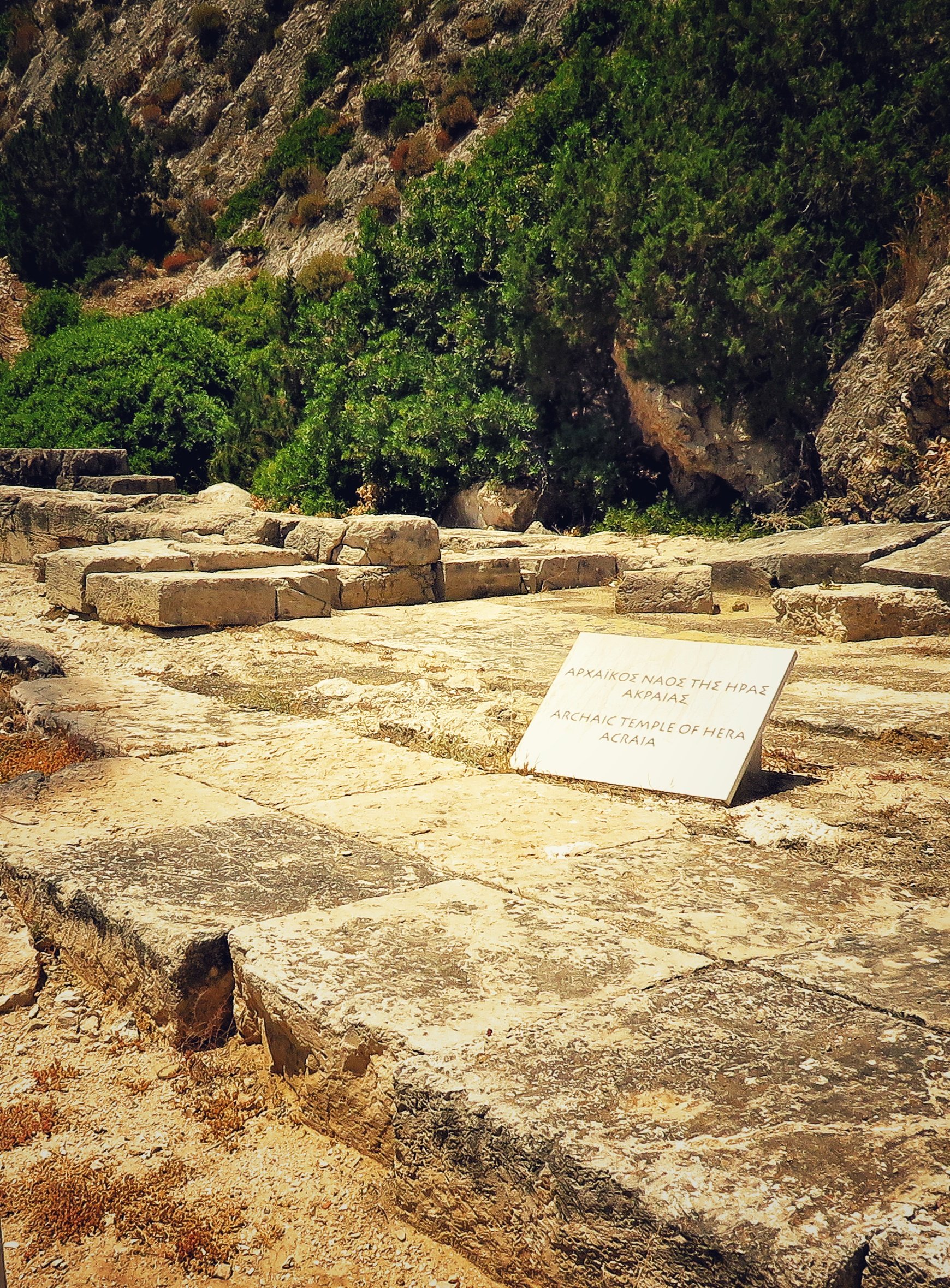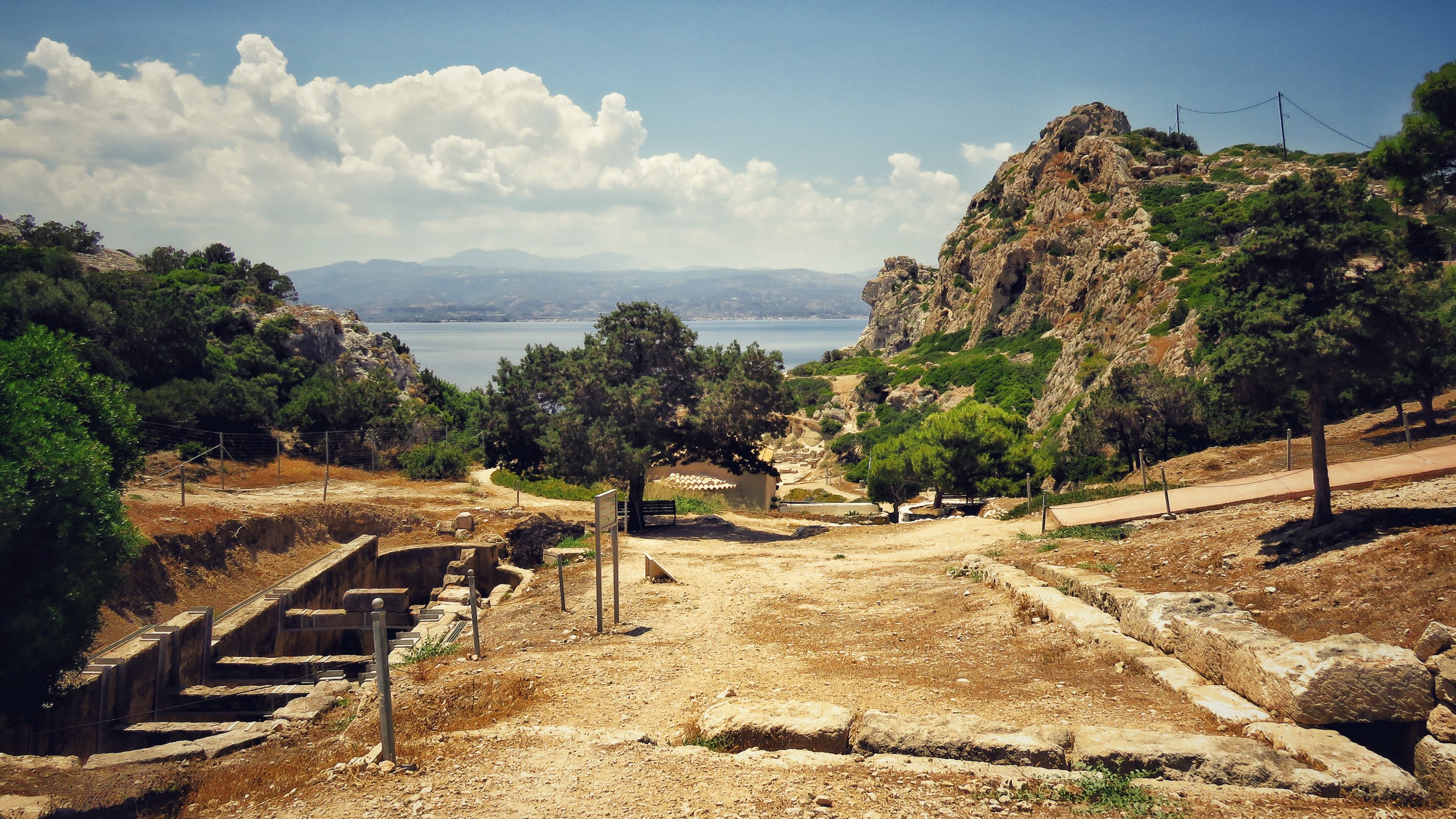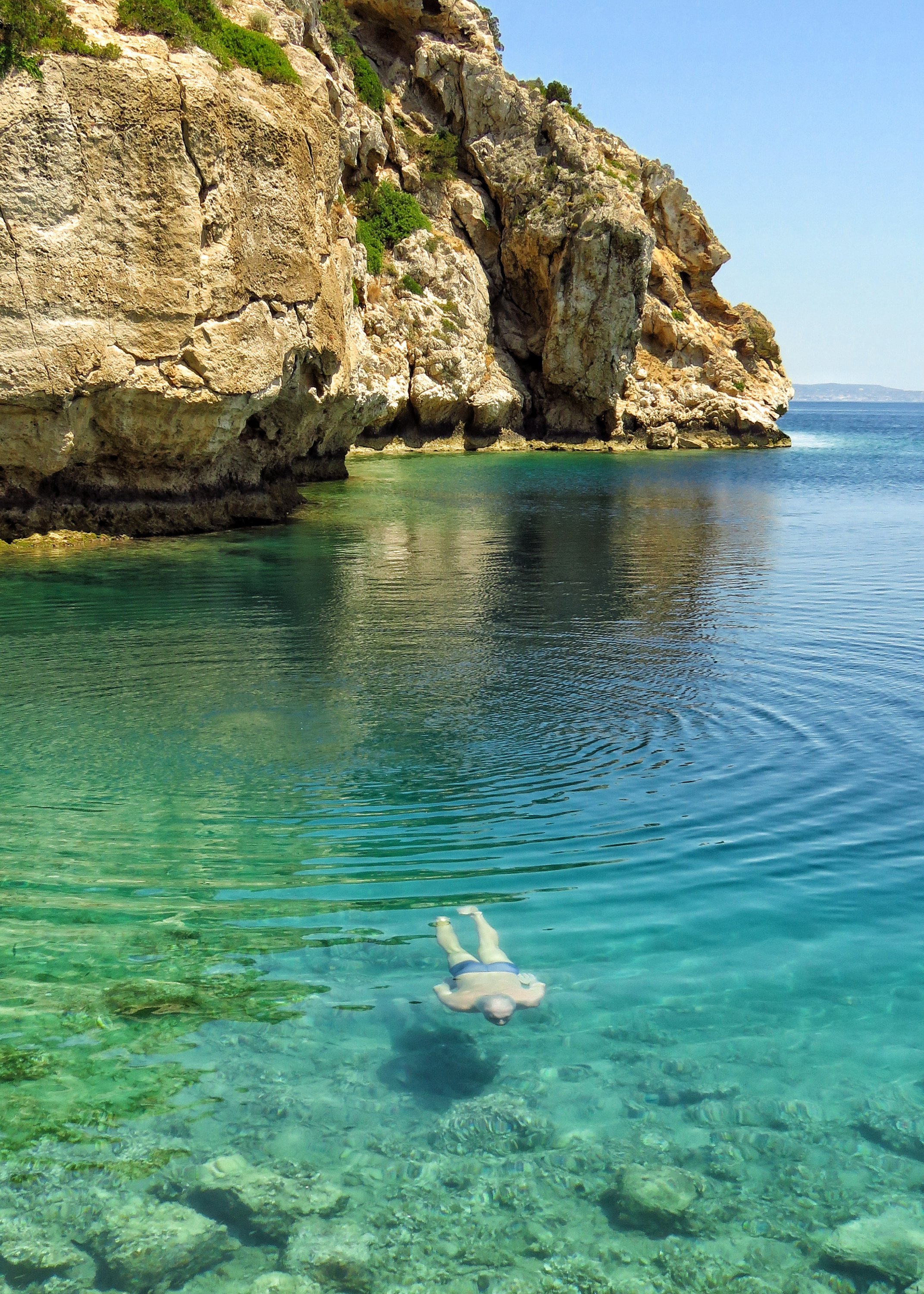
On the coastline of the Corinthian Gulf near the small town of Perachora and past the lagoon of Vouliagmeni you eventually reach the Perachora Peninsula. It is here you will find the small cove that is harboured by the peninsula and holds the sanctuary of Hera Akraia-Limenia, these days an archaeological site. Here is a place where you can get lost in history and day-dream about ancient times. It is not particularly difficult to get lost in the past in Greece as around every corner there is some kind of structure to remind you that you are not the first to pass this earthly dwelling and most probably will not be the last.







In this specific corner of the earth, I found a piece of heaven. My imagination ran wild as I ambled along in the stifling heat past the remnants of colossal stone buildings, that through time, have tumbled over and scattered themselves across the sloping hillside and bay area. In my mind’s eye, I imagined marble pillars and floors gracefully flowing from one level to the next until they reached the aquamarine waters of this small pristine bay that looked like something out of a glossy travel magazine.



Relieved to at last put my curious mind aside for a bit, due to the pressing early July heat that we were experiencing in Greece, it was an absolute treat to rest and look over this lovely tiny bay. The cool picturesque scene before me was a welcoming sight. I remember thinking that it must be one of the most perfectly situated locations I’ve ever seen and had I been a goddess I would most likely have built a sanctuary there for myself!



As soon as we reached the water’s edge we scrambled out of our skimpy clothing and immersed ourselves in the different shades of aqua blue letting the salty saturated water carry the weight of our bodies as we floated around this magical cove. As the cool blue liquid caressed our skin, my eyes wandered over the ancient ruins above me and I wondered what it must have been like living here all those thousands of years ago.
This particular sanctuary was founded at the beginning of the 8th century B.C. and it is speculated that it was most probably built by either the Argives or the Megarians. The Temple of Hera is on the first level of the site, which was built a few centuries later when it fell under the control of the Corinthians. In the 6th century B.C., the shrine of Hera Akraia was constructed on the site of a Geometric apsidal temple, and 200 m. east of it, near the harbour, the shrine of Hera Limenia was built.
The sanctuary expanded during the 5th century B.C., which saw the construction of the L-shaped stoa and an altar along with the creation of an agora. Higher up on the next level, a large roofed cistern was built in the 4th century B.C.. If the temple was still in use by the 4th-century, it would have been closed during the persecution of pagans in the late Roman Empire, when laws against non-Christian religions and their sanctuaries where enacted by the Christian emperors. With the destruction of Corinth by the Romans in 146 B.C. the sanctuary fell into decline and was abandoned.
It was not until 1930-1933 that the sanctuary was excavated by the British School of Archaeology in Athens under the direction of H. Payne.

I tilted my head back in the cool water and closed my eyes, my arms and legs outstretched as if they had a mind of their own. I let the warm sun kiss my face while I dreamed of this magical place and its hidden myths. On the way back to the car I looked back and a sense of longing welled up inside me, I didn’t really want to leave, I wanted to stay here and see the night sky, hear the Mediterranean Sea lap softly onto the stony beach and count the stars. Maybe next time. On the road back to Plataea I realised that there is only really one way for me to travel in Greece, and that is to get into the heart of it and feel it. The finds from excavations carried out here are exhibited in the National Archaeological Museum of Athens and the Archaeological Museum of Ancient Corinth.
#FeelGreece #Greece #ecotourism #HowzitGreece

